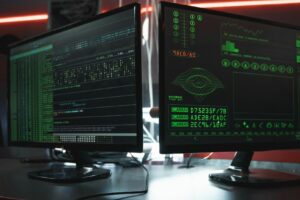More financial transactions mean more corruption at some level will go unnoticed. Universally right now, there is no solid option to completely eradicate this issue. Compared to the traditional methods of verifying and figuring out where the corruption started or happened, technology helps us now in anti-corruption investigations.
Advanced technology enables us to access vast amounts of data on societies, individuals, economies, businesses, or consortiums. The data revolution of the past few decades has given us the opportunity to be at the forefront of corruption and be prepared to stop it in real time. From governments to private businesses, the adoption of access to information and data transparency is more frequent now.
So how does technology help in anti-corruption? What technology is used?
Big Data
Big data is the amalgamation of data of all types, varieties, and miscellaneous information. In the current connected age, finding data is easy with the right access and platforms. Each transaction can be recorded and stored with the help of big data. Data analytical tools and platforms can analyze it to find any sort of discrepancies or fraudulent activities. Methodical analytics can determine behavioral patterns and combine them with historical data to detect any anomaly from the normal.
Data sharing enables the officials to improve efficiency, address capacity problems, identify critical gaps, increase collaboration, and figure out fraud. Predictive analysis can be used to determine trends, value, and relationships between data to gain valuable insights. Big data can be used to gain real-time analysis too, enabling the authorities to stop fraud from happening.
Data Mining
Many international organizations are riddled with red flags, legal suits, patterns of collusion, and false information. It is not feasible to always understand this issue on the surface. Data mining helps governments and organizations in finding out such data to prevent corruption or even the chances. It helps to visualize the corrupt intent in payments or transactions.
Anti-corruption software tools utilize data mining features to detect and respond to fraud by analyzing data sets and administrative procedures. Such software cross-checks data from both public and private institutions with open-sourced procurement monitoring and analytical platforms.
Robotic Process Automation
Robotic process automation (RPA) integrates human workers with digital workers to create an efficient and effective work environment. While it frees humans from repetitive, manual tasks, RPA helps to reduce the level of corruption with fewer human interactions. RPA takes over the mundane tasks allowing the risk management teams to analyze more data on corruption.
By combining AI, NLP, and ML with RPA, rule-based anti-bribery and anti-corruption tests can be programmed in bots to analyze transactions. Such integration can enhance the bot’s capabilities to find red-flag transactions. Enhanced integration can analyze broader sets of data and score them to indicate potential corruption risks.
Technologies such as big data, data mining, robotic process automation, and much more can be used well in good hands. There are other methods to unearth such frauds in the world. It has to be seen how effective these are based on the conditions only. Fighting against corruption is a universal demand that needs to be fulfilled by all.









